5.4 Basis for any claim for the ‘rule of rescue’
Page last updated: September 2016
The four factors described below apply in exceptional circumstances and are particularly influential in favour of listing. When all four factors apply concurrently, this is called the ‘rule of rescue’:
- No alternative exists in Australia to treat patients with the specific circumstances of the medical condition meeting the criteria of the restriction. This means that there are no nonpharmacological or pharmacological interventions for these patients.
- The medical condition defined by the requested restriction is severe, progressive and expected to lead to premature death. The more severe the condition, or the younger the age at which a person with the condition might die, or the closer a person with the condition is to death, the more influential the rule of rescue might be in the PBAC’s consideration.
- The medical condition defined by the requested restriction applies to only a very small number of patients. Again, the fewer the patients, the more influential the rule of rescue might be in the PBAC’s consideration. However, the PBAC is also mindful that the PBS is a community-based scheme and cannot cater for individual circumstances.
- The proposed medicine provides a worthwhile clinical improvement sufficient to qualify as a rescue from the medical condition. The greater the rescue, the more influential the rule of rescue might be in the PBAC’s consideration.
As with other relevant factors, the rule of rescue supplements, rather than substitutes for, the evidence-based consideration of comparative cost-effectiveness. A decision on whether the rule of rescue is relevant is only necessary if the PBAC would be inclined to reject a submission because of its consideration of comparative cost-effectiveness (and any other relevant factors). In such a circumstance, if the PBAC concludes that the rule of rescue is relevant, it would then consider whether this is sufficiently influential in favour of a recommendation to list that the PBAC would reverse a decision not to recommend listing if the rule of rescue were not relevant.
This guidance on the rule of rescue is deliberately kept narrow. Although there are relevant arguments for broadening the guidance, the PBAC is concerned that doing so would reduce the relative influence of the rule of rescue if it is applied to a broader set of eligible submissions. In other words, the greater the proportion of submissions that the rule of rescue is applied to, the smaller its average impact in favour of listing across the identified submissions.
One issue that has arisen concerning the rule of rescue is that a second medicine to treat the medical condition that is considered to meet the requirements of the rule is not suitable for this consideration. This is because, by definition, the second medicine does not meet the essential first factor (ie that there is currently no alternative intervention). This causes a difficulty if listing of the second medicine is sought on a cost-minimisation basis.


